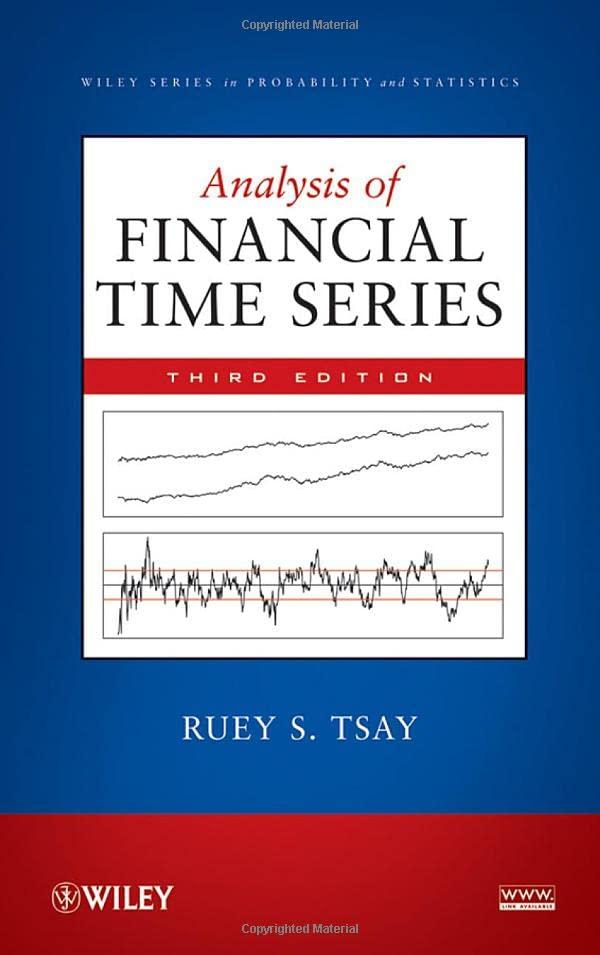Consider the monthly U.S. 1-year and 3-year Treasury constant maturity rates from April 1953 to March 2004.
Question:
Consider the monthly U.S. 1-year and 3-year Treasury constant maturity rates from April 1953 to March 2004. The data can be obtained from the Federal Reserve Bank of St. Louis or from the file m-gs1n3-5304.txt (1-year, 3year, dates). See also Example 8.6, which uses a shorter data span. Here we use the interest rates directly without the \(\log\) transformation and define \(\boldsymbol{x}_{t}=\) \(\left(x_{1 t}, x_{2 t}\right)^{\prime}\), where \(x_{1 t}\) is the 1 -year maturity rate and \(x_{2 t}\) is the 3 -year maturity rate.
(a) Identify a VAR model for the bivariate interest rate series. Write down the fitted model.
(b) Compute the impulse response functions of the fitted VAR model. It suffices to use the first 6 lags.
(c) Use the fitted VAR model to produce 1-step- to 12-step-ahead forecasts of the interest rates, assuming that the forecast origin is March 2004.
(d) Are the two interest rate series cointegrated, when a restricted constant term is used? Use 5% significance level to perform the test.
(e) If the series are cointegrated, build an ECM for the series. Write down the fitted model.
(f) Use the fitted ECM to produce 1-step- to 12-step-ahead forecasts of the interest rates, assuming that the forecast origin is March 2004.
(g) Compare the forecasts produced by the VAR model and the ECM.
Step by Step Answer:






